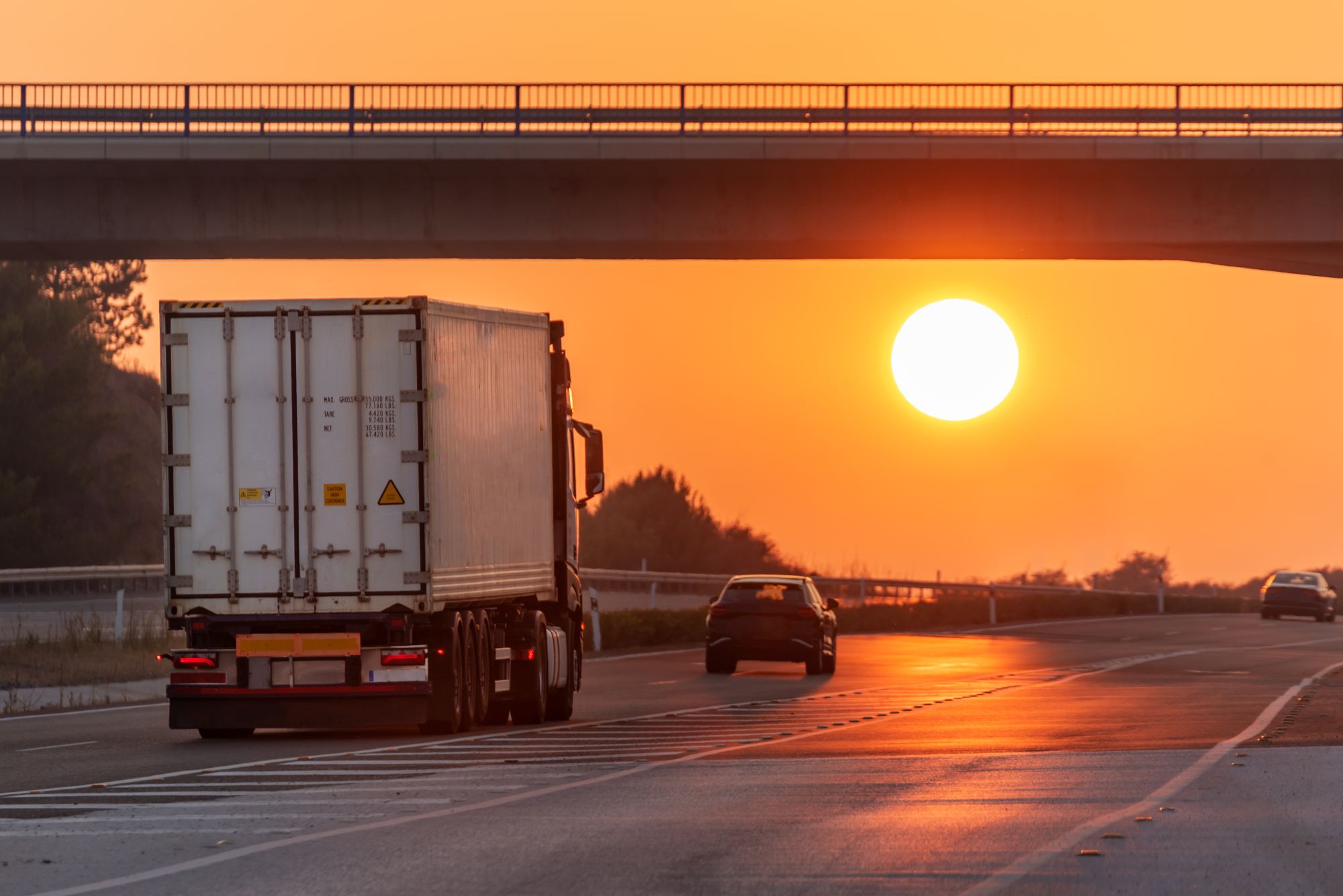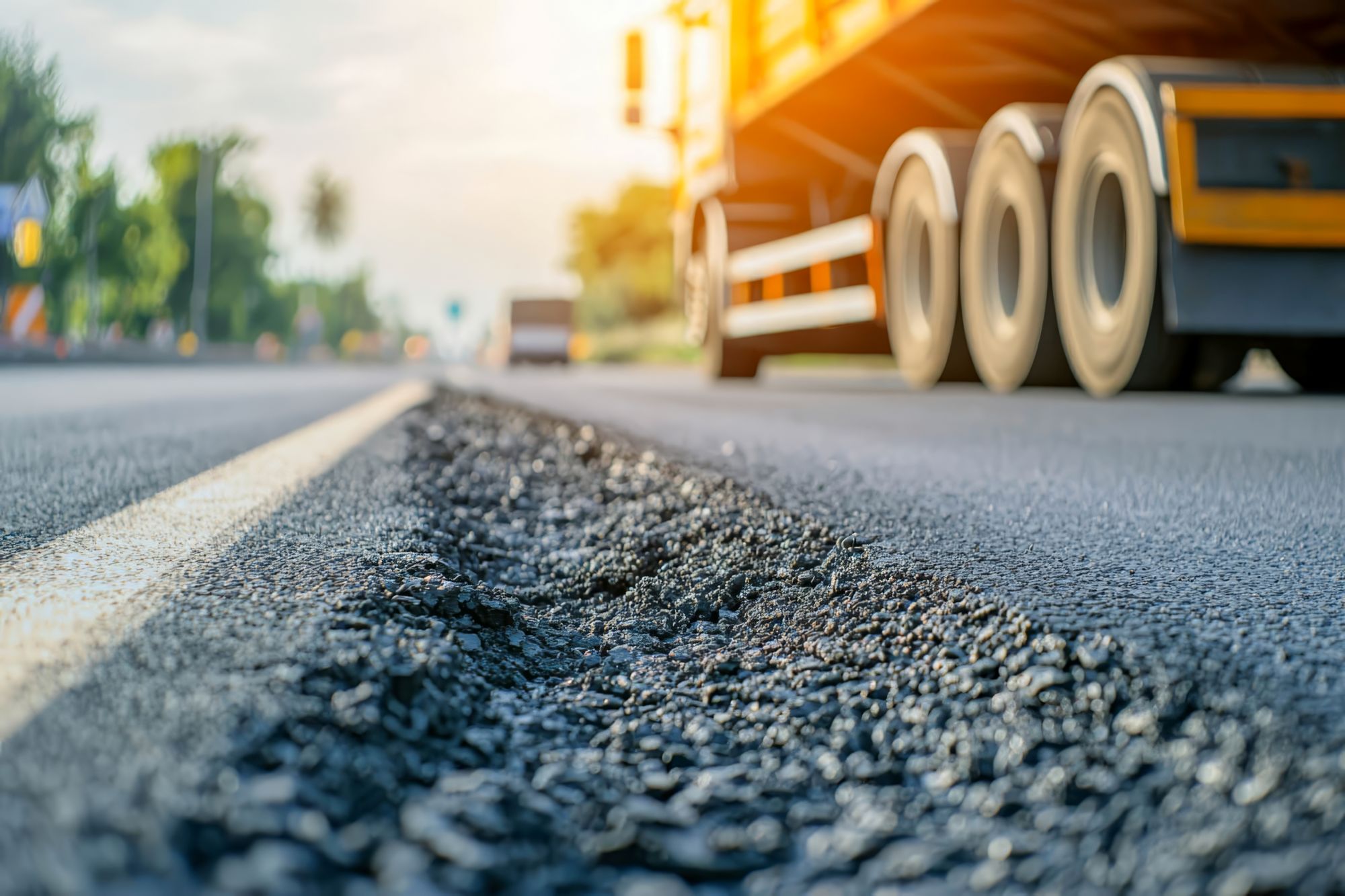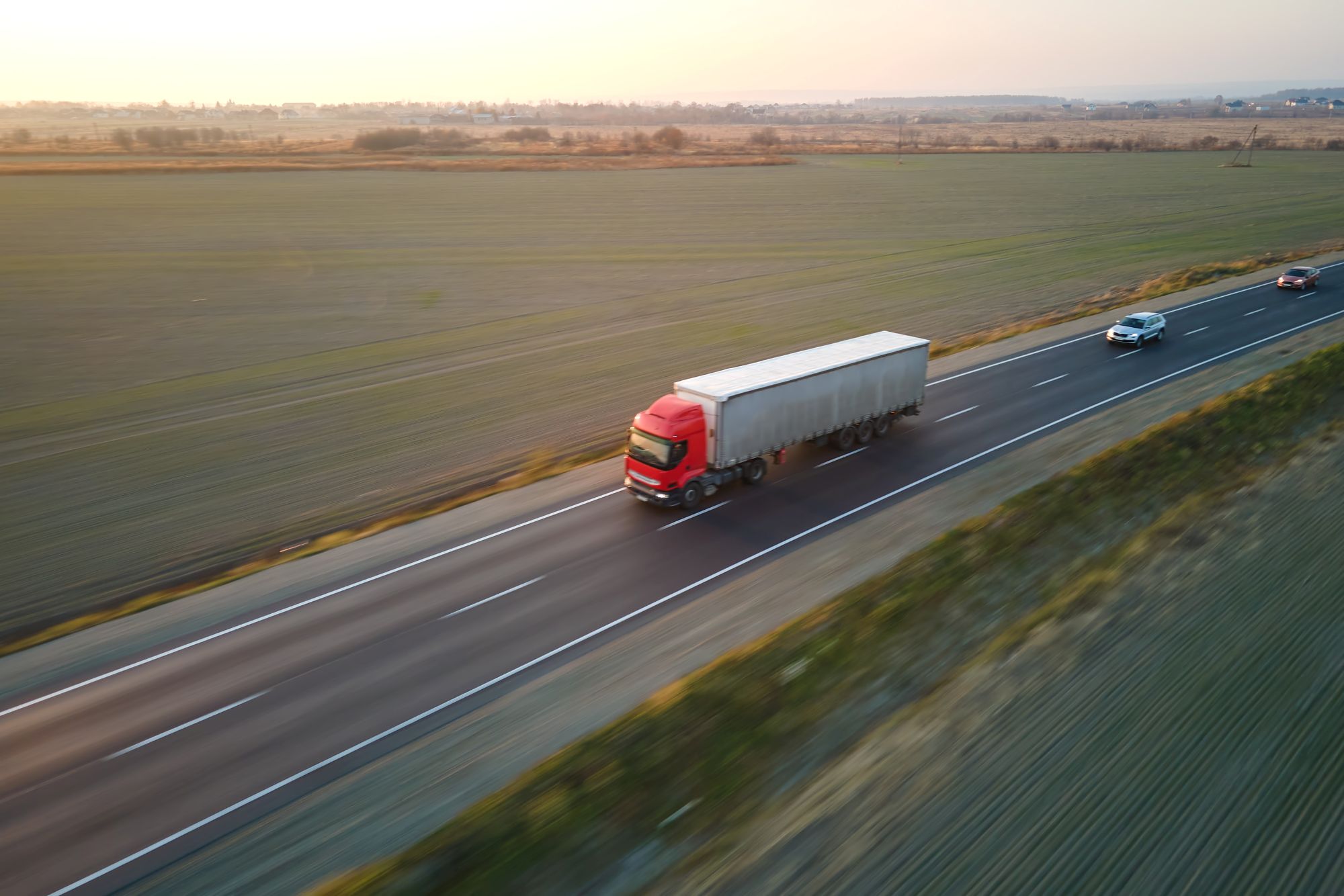
Guest
Kako vročinski val vpliva na mobilnost v Evropi: kako ostati korak naprej
Ustvarjeno: 31. 07. 2025
•
Posodobljeno: 31. 07. 2025
Na evropskih cestah je vroče, vročina pa se le še povečuje. Julij 2025 je po vsej celini prinesel rekordne temperature, okvare infrastrukture in motnje v prometu, kakršnih še ni bilo. Za upravljavce voznih parkov in poklicne voznike izziv ni več teoretičen. Ekstremna vročina je tu in v realnem času spreminja pokrajino mobilnosti.
O vplivih letošnjega vročinskega vala na zdravje in podnebnih vplivih je bilo že veliko napisanega. Veliko manj pozornosti pa je bilo posvečene temu, kako vpliva na logistiko, omrežja tovornega prometa in ljudi, ki skrbijo za pretok blaga prek meja.
V tem članku je predstavljeno, kako vročinski valovi ovirajo evropski sektor cestnega prometa - od taljenja asfalta in razpok na avtocestah do gozdnih požarov, skrbi za varnost voznikov in zamud pri dostavi - ter ponujeni praktični nasveti, ki voznim parkom pomagajo ohraniti operativnost, odpornost in korak pred drugimi.
Vročinski valovi postajajo nova normalnost
Po podatkih Svetovne meteorološke organizacije se Evropa redno sooča z izjemno vročino, saj temperature močno presegajo sezonske norme. V prvem tednu julija 2025 so v Nemčiji zabeležili najvišje temperature nad 39 °C, medtem ko so v Španiji in na Portugalskem v tem mesecu temperature presegle 46 °C. Evropa kot celota se segreva približno dvakrat hitreje od svetovnega povprečja.
Ti pogoji niso le neprijetni, temveč tudi moteči za delovanje. Raziskave, ki jih navaja Logistics Business, kažejo, da so vročinski valovi vse večji dejavnik tveganja za tovorni promet, saj zmanjšujejo dobro počutje voznikov, poškodujejo tovor in povzročajo zamude pri dostavi.
Zato je tovor, občutljiv na temperaturo, kot so hrana, farmacevtski izdelki in elektronika, vedno težje varno prevažati. Upravljavci opažajo naraščajočo stopnjo kvarjenja in kazni za zamude pri dostavi. Razmere so še posebej zapletene na območjih, kjer so električna omrežja obremenjena zaradi povečanih potreb po hlajenju, kar zmanjšuje zanesljivost hladilne verige.
Taljenje cest in razpokane avtoceste
Eden od najbolj očitnih znakov, da vročina vpliva na mobilnost, se je pojavil v začetku julija, ko so deli nemškega avtocestnega omrežja začeli pokati pod pritiskom toplotnega raztezanja. Odseki avtocest A1, A9 in A10 so bili med drugim zaprti zaradi nujnih popravil, saj so se betonske plošče izbočile in spoji počili - neposredna posledica dolgotrajnega vročinskega vala v državi.
Z višanjem temperature tal in sušenjem rastlinja postajajo tudi gozdni požari redna - in nevarna - značilnost evropskih poletij. Po podatkih iz Wikipedije, kjer je povzetek evropskega vročinskega vala 2025, so v južni Španiji, Nemčiji in Grčiji izbruhnili gozdni požari, ki so povzročili množične evakuacije ter začasno zaprtje glavnih cest in mejnih prehodov.
Junija 2025 je bila zaradi požarov v naravi zaprta cesta A939 na Škotskem, v Franciji pa so požari zaprli več cest in cestnih predorov v okolici Marseilla. Te zapore ne povzročajo le prometnega kaosa, temveč pomenijo, da morajo težka tovorna vozila spremeniti pot, pogosto po ozkih in neprimernih cestah, kar lahko podaljša čas potovanja za več ur.
Poleg tega dim zmanjšuje vidljivost voznikov in ogroža zdravje, zlasti tistih, ki v kabini z neustreznim filtriranjem zraka preživijo dolge ure. Na številnih območjih so reševalne službe preobremenjene, kar pomeni zamude pri čiščenju prizadetih cest ali urejanju preusmeritev.

Varnost voznika
Tveganja za infrastrukturo spremljajo tveganja za ljudi. Poklicni vozniki so še posebej izpostavljeni vročinskemu stresu, dehidraciji in utrujenosti. SNAP-ov lasten poletni vodnik za voznike opisuje nevarnosti pregrevanja kabin, obremenitve zaradi dolgih ur pri visokih temperaturah ter pomen hladilnih sistemov in počitka.
Številni obcestni objekti v južni in vzhodni Evropi so še vedno slabo opremljeni za zagotavljanje dobrega počutja voznikov med vročinskimi valovi. Klimatizirana počivališča, parkirišča v senci in zanesljiv dostop do vode niso zagotovljeni, zato je mreža preverjenih, udobnih lokacij podjetja SNAP pomembnejša kot kdaj koli prej.
"Vročinski val letošnjega poletja je opozorilo," pravi Raquel Martinez, evropska vodja prodaje pri podjetju SNAP. "Evropski prometni sistemi so bili zasnovani za hladnejše podnebje. Vendar se ne bomo vrnili nazaj. Vozni park, ki se bo prilagodil zdaj - s pravimi orodji, pravimi strategijami počitka in pravo tehnologijo - bo tisti, ki bo uspevati."
Po Evropi se začenjajo prepovedi tovornjakov
Zaradi vročine je več držav uvedlo ali podaljšalo prepovedi vožnje tovornjakov, ki jih sproži vročina. Kot poroča TrafficBan.com, sta Bolgarija in Madžarska julija 2025, ko so se temperature povzpele, uvedli dnevne omejitve za težka tovorna vozila. Omejitve so v določenih obdobjih veljale tudi za težka vozila na nekaterih ranljivih cestah.
Poleg tega poletne zastoje povečujejo tudi prepovedi vožnje tovornjakov ob nacionalnih praznikih v Nemčiji, Franciji, na Poljskem in v Italiji. Vse podrobnosti so na voljo na spletni strani Trafficban.com, kjer so navedene regionalne in časovne omejitve po vsej celini.
Te prepovedi za voznike in načrtovalce ustvarjajo mozaik območij skladnosti in časovnih omejitev, ki zahtevajo skrbno navigacijo in posodobljena orodja za načrtovanje.
Vpliv zavarovanja
Zavarovalnice zaradi vse večjih tveganj, ki jih predstavlja ekstremna vročina, začenjajo ponovno ocenjevati svojo izpostavljenost. To bo verjetno vplivalo na vse premije. Zavarovanje blaga v tranzitu je pod pritiskom, zlasti za tovor, občutljiv na temperaturo, saj je vse več zahtevkov zaradi kvarjenja in zamujanja rokov dostave. Stroški zavarovanja vozil se lahko povečajo tudi zaradi večjega števila odškodninskih zahtevkov zaradi okvar in nesreč, povezanih z vročino.
Medtem se vse bolj preverja odgovornost delodajalcev, zlasti če imajo vozniki ali zaposleni zdravstvene težave zaradi vročine, ki so posledica neustreznih ukrepov za dobro počutje. Ti trendi bi lahko skupaj pomenili višje premije in težje pogovore o podaljšanju pogodbe za prevoznike, ki nimajo jasnih načrtov odpornosti.
Kako se izogniti vročinskim valovom
V družbi SNAP verjamemo, da je ključ do obvladovanja evropskih vročinskih valov v pripravah, načrtovanju in proaktivnem upravljanju blaginje.
Tukaj je opisano, kaj lahko storijo operaterji:
Planiranje glede na temperaturo in teren: Uporabite vremenske podatke v realnem času, da se vozniki izognejo nevarnim potem.
Odpravljanje voznikov za razmere: Vozila opremite z vodo, opremo za senco in kompleti za hlajenje v sili.
Dnevno preverjajte predpise: S preverjenimi viri, kot je Trafficban.com, bodite obveščeni o spreminjajočih se prepovedih za tovornjake v tujini.
Optimizacija postajališč za počitek: Spodbujajte voznike, da uporabljajo aplikacije, kot je intruck, za iskanje dobro opremljenih in klimatiziranih postajališč po vsej Evropi.
Vzdrževanje vozil zaradi vročine: Med vzdrževanjem bodite posebej pozorni na pnevmatike, hladilne sisteme in delovanje akumulatorja - zlasti pri električnih ali hibridnih vozilih.
Preverirajte načrte zavarovanja in tveganj: Zagotovite, da politike upoštevajo zamude, povezane s podnebjem, kvarjenje tovora in škodo zaradi požara.
Načrtovanje za vročinske valove začnite že danes
Oglejte si naš interaktivni zemljevid SNAP ali prenesite aplikacijo intruck še danes. Z več tisoč zaupanja vrednimi partnerji po vsej Evropi je to vaša bližnjica do varnejših postajališč - ne glede na temperaturo.



